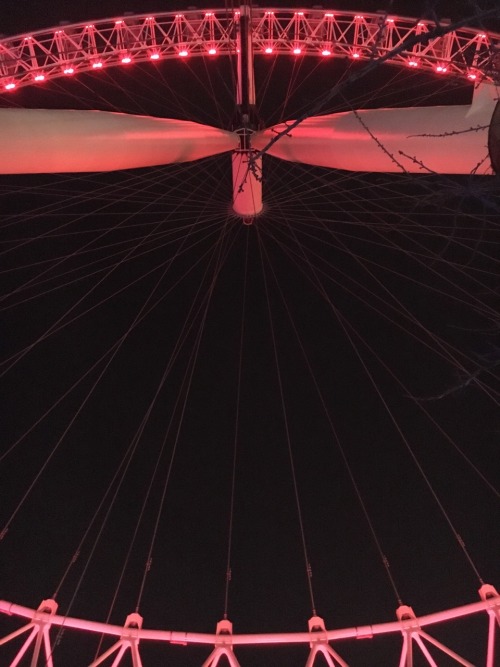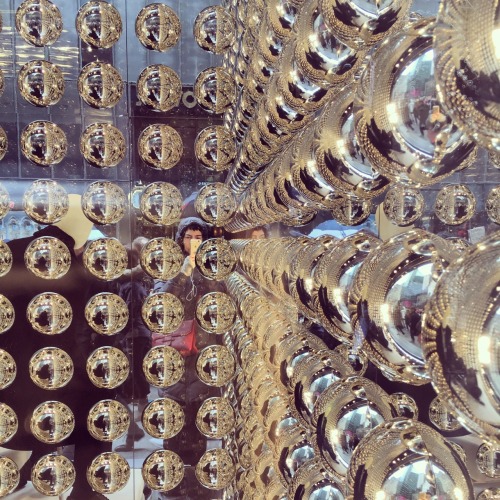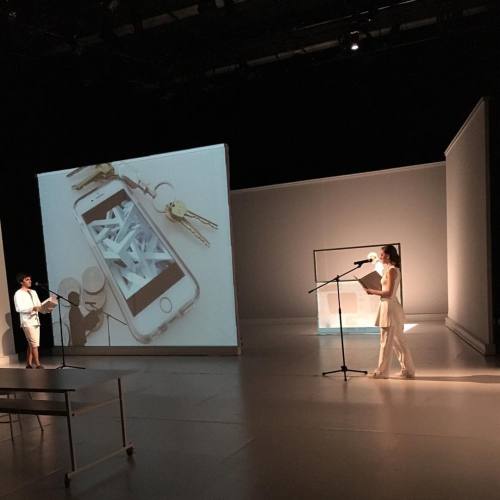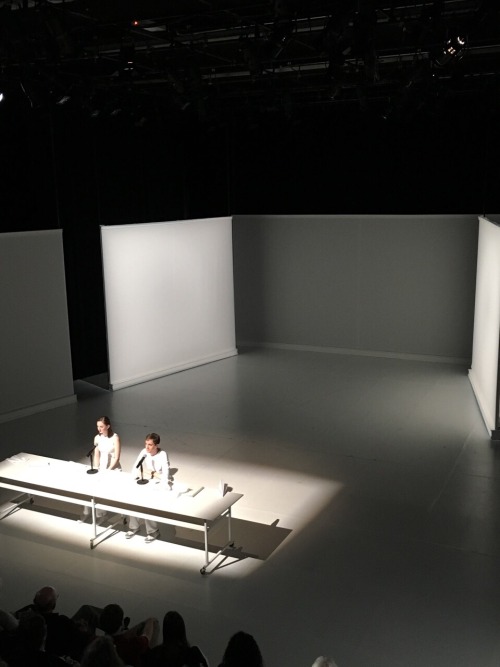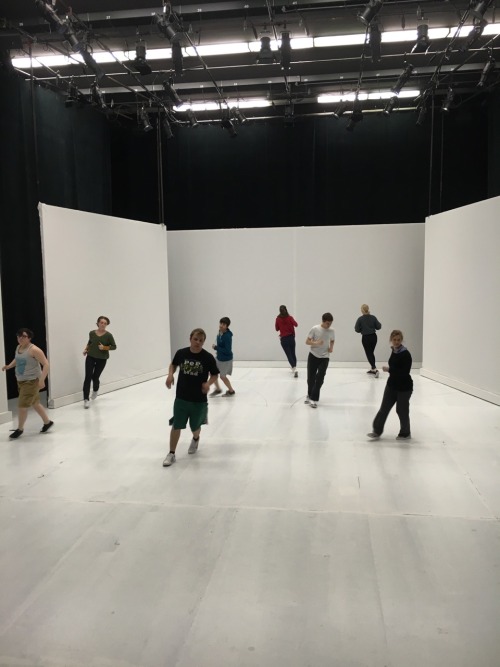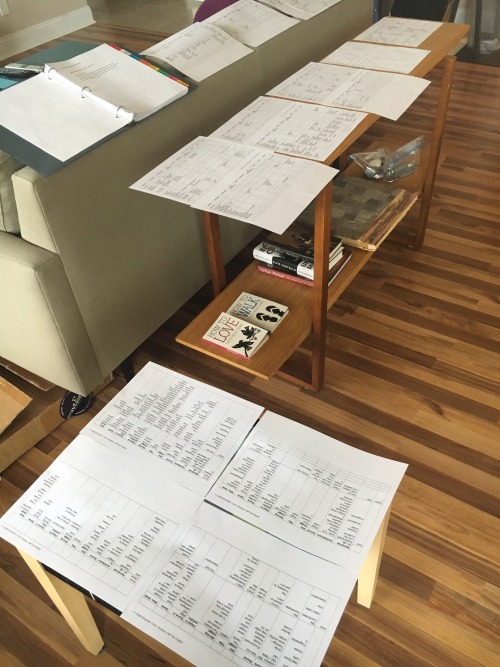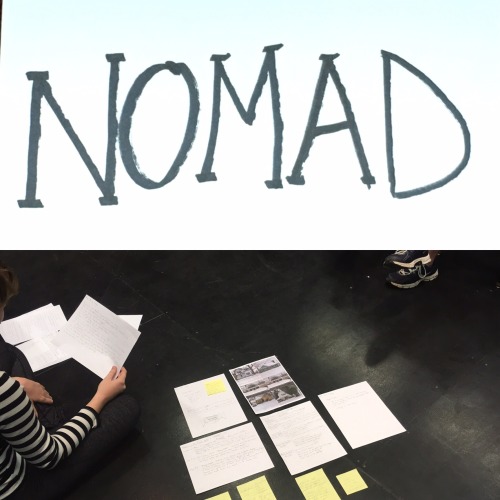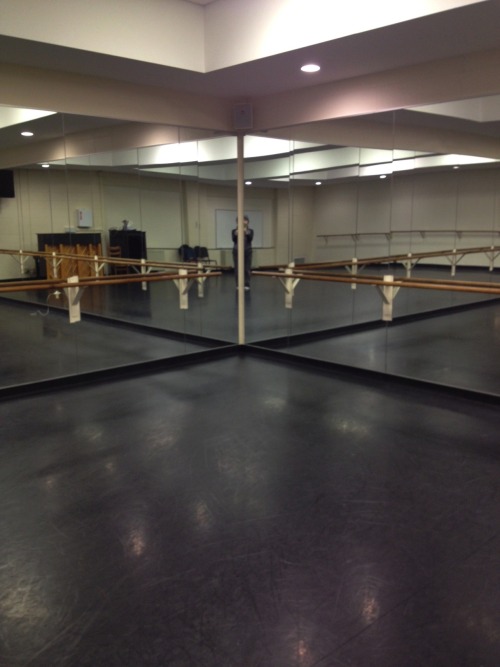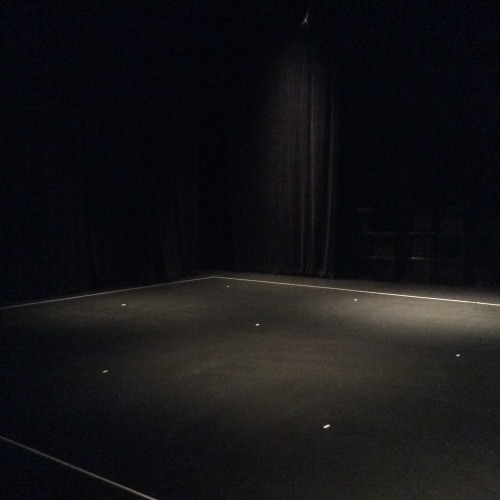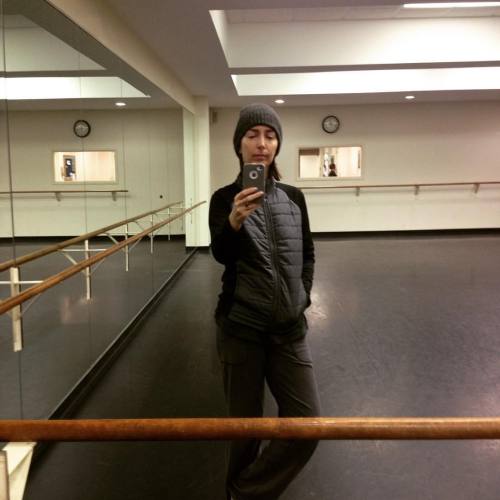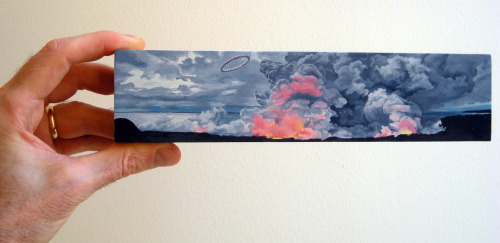#darlavillani
Jan.
She awakes like a heretic -
with urgency, with the charge of nature…
“750 - A Revolution, Inside a House”
This project / book, has been on hold for so very long.It’s been hard on my heart, strong forcefields have kept me from moving forward.
Cue to the chronic, manic question that is the subtext of every new encounter at every opening, dinner party, etc. Blah, blah, blah - What are you doing? - What are you working on?
I reply, toast. Or, I’m semi-retired. Or, I stare at my wrist and remember that David Lynch loves factories.
Perhaps certain completed works have their own reasons for keeping their distance.
Time - timing, our readiness.
Hurry up and wait.
I’ve learned a new empathy for suspension. There can be so much resistance in the process and ego can be predatory. You put down one sword to pick up a new one. Each sword seems to have it’s own impenetrable science.
Back to begin, back to beginner, and then what.
Some things hold out with a knowingness that they must be sung.
Meet The Principle Characters From 750.
Intro #1.
I’d like you to meet Jan.
The mother.
Post link
First night in London.
I’m here assisting with a Butler University theatre intensive - post-production discussions, an abundance of plays, master classes, museums and documenting all above.
Swing by and see more www.instagram.com/butlertheatrelondonnyc…Cheers!
Post link
First night in London.
I’m here assisting with a Butler University theatre intensive - post-production discussions, an abundance of plays, master classes, museums and documenting all above.
Swing by and see more www.instagram.com/butlertheatrelondonnyc…Cheers!
Post link
In every case we are concerned with something marked by three characteristics.
1) It is to the highest degree light
2) It is in motion
3) It is a vector of information
There is always a story behind a story.
A pilot, a collision to set things in motion.
Decades ago at Harvard Summer Dance, I walked out of my painting studio and into a dance studio.
Next new world.
The ecology of dance from a painter’s perspective looked like a very exclusive club. But let’s be honest, life seems to be a honeycomb of exclusivity. I was at Harvard on scholarships - and would return two more times by those means.
Forty hours a week for the next six weeks.
At the top of my schedule was a beginning ballet class.
Lance Westergard was teaching.
As many of you know, Lance is a ballet master, a choreographer, an educator with an incredible acumen. At the time, I didn’t know the extent of his history. As he entered the studio all of that trailed him. The space became voluminous. He stood in fifth position, extended his arms - I gasped.
Lance’s presence summoned every bell tower everywhere to ring out at once.
The room got windy.
I stood at the bar with young women that had been training since age three - iron clad and versed in a language I couldn’t read or assimilate into my body.
Then this happened.
From the other side of the studio, Lance looked into me. Now, when one is really seen in the world - or when someone can hold you in their vision and mind like that, well, it can be one of the gifts of your life.
One of the many extraordinary things about Lance is that he values all varieties of intelligence and perspectives. Another human may not have created a space for me at the bar - a space to work - to research - to absorb.
The stakes were high, leaving one world of work for another. I’m not a believer in seeking out permission from anyone for anything - knowing that I did not have to fight, or prove myself against this new criteria was a relief. It kept me open to my own agenda and focus. And, I never thought learning should be performative in any medium. I uphold that philosophy when I lead a workshop or seminar - a fidelity to their work - not mine.
Around a “magic” object forms a kind of forcefield that is in fact the territory of the story itself.
All of that seems like a century ago, and a minute ago.
Waterfalls of life since then.
Lance and I have remained connected.
Pivot.
Last month, Williamsburg, Brooklyn - friends, colleagues, and former students gather to celebrate my husband William’s birthday at The Tavern - Delaware and Hudson. ( you should really go, by the way ). So great to have folks from all realms connect.
Look up.
Lance enters, almost a long zoom dolly shot, a delicate metaphysical float by the bar. He always smoothes out the air in such a velvety way.
We sit.
He reaches into his jacket and pulls out a white envelope, it’s been folded and rolled. I know instantly what it is. It’s something I admired when we last dined at his home.
It is perfect. In every way, it is.

Transference of the hero defined as follows, “Usually the object is in ‘another’ or different realm that may be situated faraway, horizontally, or else at a great vertical depth or height.
A lighthouse.
He says to me, “Now I’ll always know where the light is coming from.“
My mind speeds to “Sling Blade” - when the boy discovers that message wedged inside of a book.
And now this miniature tower.
Can you imagine?
A light to bring you home.

Read more about Lance Westergardhere.
It is rumored the Lance is teaching. For workshop inquiries find him on Facebook orsend word here.
*All headers via Italo Calvino’s - “Six Memos for the Next Millennium”
This article originally appeared on my newsletter. Get some goodness - hop on here.
Post link
Hello Dear Friend.
With all that’s spinning in the world right now, I hope you’re very well. There’s so much at stake - and much to change. I’ve been wondering, how’s your summer been going?
New - New York.
For the last month I’ve been working on the Butler University NYC Summer Theatre Program. The students are terrific, and we’ve been seeing tons of performances, visual art and music. They’re also meeting industry professionals and going behind the scenes to learn about process from a variety of perspectives.
Along with providing context and conversation pre and post productions, I’ve been documenting moments, events and wrangling them online. It’s been wonderful to be a part of their New - New York.
See Our Summer at a Glance.
Heck, art is good. Yup, we’re on the interweb, Facebook&Instagram. Like and follow us behind the scenes and into the action.
Thanks very much!
Sending goodness x, Darla
Post link
Portal 1812 - Congrats to the cast and crew for a great (sold out) opening night! Tickets: https://butlerartsfest.com/events/butler-theatre-portal-1812
Post link
Portal 1812. The cast warms up for the first night of tech.
4.13 -4.17 @ 80 min Info & Tix:
https://butlerartsfest.com/events/butler-theatre-portal-1812
Post link
“She feels the cool split walking in, something sugary, perfumed…” Portal 1812
Info & Tix: https://butlerartsfest.com/events/butler-theatre-portal-1812
Post link
The set starts to come together.
…more to come. #portal1812 (at Butler University Jordan College of the Arts)
Post link
We have a poster for the production…“Portal 1812” - two weeks until tech. (at Butler University Jordan College of the Arts)
Post link
Integrating fresh material / Constructing a preliminary order.
Recalibrating the scene template for “Portal 1812”. Coming soon - a new evening length multidisciplinary performance work at Jordan College of The Arts at Butler University. Part of Butler ArtsFest 2016, April 13th - 17th.
Get updates on this project…join me.
Post link
Sean Caron, Theater Major executing his rendering of “Phrase C” during the workshop today. - @ Jordan College of The Arts, Butler University.
Post link
Beginning scene template for “Portal 1812”…rehearsals start next week. — at Butler University Jordan College of the Arts.
Post link
Presentations via Interdisciplinary Workshop / round one:
Butler students show research for “Scoring Your Object” investigation with shared criteria - the pathway into their work is constructed!
(Lexy Weixel / Theater Major)
Join the monthly newsletter. Get more goodness.
Post link
Working on “Phrase A” in class today - articulating the location, the toggle between real time and narrative time.
Butler students are considering what content or questions from a previous investigation to use as subtext for the allotted zones within the phrase.
Post link
Making Ideas Visible.
Brain space.
Things are in full swing here on the lovely campus at Butler University’s Jordan College of the Arts.
I’m finding my way into a rhythm of teaching along side these incredibly bright students coming from Theater, Dance and Music concentrations. Many have double majors including Anthropology, Psychology, Gender and Sexuality Studies, Literature, and Music Performance and Composition.
Interdisciplinary / Multidisciplinary / Devised Performance
We’re toggling between building ideas from conceptual means into physical form, and conversely from the physical to conceptual utilizing writing prompts, set material, sound, visualization, shared structures and themed criteria - working individually and as an automatic ensemble. We are rendering ideas in the spirit of creative research, our fidelity to tracking the genesis and pathways of these constructions, reframing the terms with how we show and observe what we make.
In another arena, I’m working with non-majors in a body based / performance studio course. This is exciting to me - it’s how I began as a painter with making performance work. Again, such wonderful students. I’m grateful, I’m learning from all of them.
And there’s the production, more on that process later…I look forward to showing you behind the scenes very soon.
Sending goodness ~ Darla
>> Feeling adventurous? Get in on my newsletter.
Post link
First day in the studio.
I’m b a a a c k.
My residency at Jordan College of The Arts - Butler University begins. Excited to work with these very bright young artists.
Post link
The Good Labor
Hello Comrades!
So much preparation in all realms right now. Perhaps you’re in the midst of wrestling a tree or the wave of a burning idea.
My head has been buried in notebooks, research and preparation. A winter long residency at Butler University’s Jordan College of the Arts is drawing near.
Q & A.
With that in mind, I’m asking for your participation in a bit of research here. It’s YOU and TIME sitting across a table, you have one chance, one question:
* If you had one question for TIME, what would it be? *
I’m excited to hear your thinking on this.Click the yellow button above, email below or simply hit reply. Thank you!
Wishing you all the best with what you’re working on right now.
Sending goodness ~ Darla
This post originally appeared on my monthly newsletter - hop on here.
Post link
Steve Cope / Paintings
Engineering time, space and place - The collective and invented memory of landscape.
Above, Hawaii, 2″ x 8.5″ oil on panel 2012

Wissahickon, 7" x 28" oil on panel 2015
Steve and I met in Normandy, France where we studied landscape painting with the formidable Jason Berger. Decades later we have reconnected, I’m happy to say. And though I moved into more of a performative and writing life - Steve is still deeply painting. He is an Assistant Professor of Art at Saint Joseph’s University and his work has been featured in many solo and group shows, and is collected in both private and public collections. These days I’ve been in research mode around process and protocols with making work. Having looked at and admired Steve’s work for a long time now, I was grateful for the opportunity to sit down and talk to him about it.
Oh, and thrilled to say that I am the proud owner of one of his paintings. I love living with it.
Point Of Departure

Old Men, 5" x 20" oil on panel 2014
SC: Before I started painting these landscapes, which was not that long ago - 2007, 2008 - I was painting big, drippy geometric abstractions. And in the studio there was a little block of wood, 1’ x 5’ inches, I drew a little landscape on it. I thought well, that’s sort of interesting. The vastness of that space just got amplified. That’s what really started me on this - something so vast on something so small.
DV: Is there a an issue in the work that you’re dealing with right now that you’d like to centralize this conversation about?
SC: If I think about what I’m doing now, it’s a matter of putting together a composite image that I hope looks beautiful and intriguing to the viewer, it’s as straightforward as that. I like a deep space landscape and I want it to look like it makes sense even though it’s a bunch of different places all put together.
So step one is putting that image together. I do that using drawings and Photoshop, with many different photos, and I print it out when I’m happy with it. It is a compound image, it’s not actually a real place. The sources I work from look a bit choppy, but in my minds eye I think that these elements are going to look seamless when I paint them. In the process of painting, I also change things, move things and simply make up things as I go. Recently I have been adding in quotes or forms from the Hudson River School paintings, trees and such, as a nod to how great they are and to their influence.
Painting The Paintings

DV: What are your materials - how do you paint them?
SC: I use oil paint and pencil on these custom birch ply panels. To make them, I use powerful work lights, and super strong reading glasses. The brushes are tapered and pointed almost like needles.
DV: The smaller images were mostly 2" x 8" and the newer pieces are 7" x 28". Why do you think they’re getting larger now?
SC: I just need more room. I was making the little ones and getting a certain amount of detail, I just want to put more. I feel like the more I touch the object with my paintbrush the more connected I get to it, and the better it gets. So the larger panels just allow me to have more time with those paintings, to touch them more often for a longer duration. So I get more and more connected to them.
They start really chaotic. I have a photograph that is like a Frankenstein image, I do base coats of color dropped into broader areas. Then the next step for me is to find anchors in the image. So I’ll paint an area to completion - say two square inches or three square inches of a spot, it could be a rock or a tree, just something to anchor that area in the painting then I move out from that spot and organize all of that chaos into something that’s recognizable and hopefully good looking.
Construction

Split, 7" x 28" oil on panel 2015
DV: Is the process of reconstructing these base elements of space, time and geographies into new ecologies present in previous works, or are they exclusive to these landscape paintings?
SC: In the beginning I would simply take photographs or acquire photos from friends, family or students and I would paint straight ahead. And then I found that if the photograph wasn’t enough I would add a form to it and that became interesting. I would add a rock or a tree, now I’m adding whole sections of the landscape, I’m renovating the whole space and all the objects in it to an order that I like and that I think looks interesting. Sometimes you have a landscape and it just doesn’t overlap well. You can’t get from one place or another and it just is not as interesting as it could be. To find that perfect spot on the earth is hard, I want to develop the space well, so that it has patterns and pathways, contrasting areas and dynamic movement, beautiful light. Size relationships, I can control that, I can control how far you get into the landscape before you hit something else. So I can dictate in a certain way, how your eye travels through that space.
DV: There’s a rate of entry, there’s a whole sequential pathway. It makes me think about the scale of the paintings and what that means to the viewer. I’ve been looking at them for a long time and now that they’re getting bigger, I’m allowed to get closer.
SC: And hopefully you see more stuff. Also you know, there are places in the paintings where I can make a little separate thing, like little vignettes. So, on the left side there’s an area with rocks and a broken down tree in a stream, that whole area separates itself as it’s own little painting off on the side. I can do that in a couple of places in the painting, I’ve got these separate little spaces that on their own may be engaging. They read in with the whole, but at the same time there’s this gathering here and I can read it as a separate little idea.
DV: They’re like time zones, or signatures - like sub-spatial occupations. These spaces have delicate harmonic qualities that yield subtext. Ha - the subtitles of space.
SC: Yes, also some of the same trees or forms show up in a bunch of paintings…because I like the tree, or the bark or something about it. That’s kind of fun because I have a series of forms I can use multiple times in different paintings.
DV: Well it’s also, in a subtle way making them into a series - a serial format - and that’s such a modern idea with painting and when you see these repeating elements that you develop a sense of history with and then they end up in a different space and time and they echo and the narrative stretches. Italo Calvino talks about a “magical” object inside of story that travels though it - a ring for example - it moves through the story as a conductor of the story dragging and rendering these invisible force fields that ultimately become the story itself. When I looked at your earlier paintings with the hoop motif that came to mind.
Chronic Invention

DV: The paintings are getting slightly larger in scale, is there anything that you’re wrestling within them that feels new?
SC: Almost every time I have to learn a new way of doing something because they’re all so different. I mean the thing that I wrestle with all the time is, how am I going to paint this. I’ll put together this photograph and I’ll sit down with this big white panel there and this photograph here and I look at that image and think how the heck am I going to do that? So I feel that I’m painting at the very top edge of my capabilities. I barely think I’m going to pull this thing off every time. I’m not sure I can paint that thing…I mean…grass…c'mon. I want them to look seamless. I want them to look like a real place even though it’s not.
DV: Even though it’s not, and even though it is.
SC: And I think you can probably pick that up.
DV: There’s a push and pull. These paintings do their own math - the seemingly desperate parts, or states or elements are conjugating themselves. Seems like these worlds are in a flux between two things - real and not real - I sense this tension and also an energy to become real.
SC: I want them to look sort of like earth, but you’re looking through a window that’s not exactly our place.
DV: That’s what strikes me so much about them, because when I look at them I get all of the articulation, all of the reference of places known and unknown - but for all of the work and the rigor it’s almost as if the painting isn’t about the landscape, it’s about those subtle things that are indicated by the relational value of the parts. Relativity. That’s super interesting, and that’s where they get bigger, that’s a big idea in a very small painting.
SC: And I’m a painter, and I want to paint.
DV: They’re conceptual paintings.
SC: That’s great, that’s how it feels to me.
DV: There’s a real something there that can’t be identified, metaphysical maybe? Yeah conceptual, but isn’t everything anyway.
SC: It’s sort of a ridiculous idea to build this space into something flat. It goes through a lot of filters before it becomes this visual thing. I’m using these different light sources, putting all these different fragments from different photographs from different places that can be wildly far apart - California to New York.
DV: These tensions create an energized communication within the work. I was wondering if you feel the paintings are evolving process wise.
SC: They’re just bigger and more complicated, there’s just more stuff in them for me. So the size they are right now is big for me - 7" x 28" inches. I can’t see it getting smaller or bigger.
Vista

Flow, 7" x 28" oil on panel 2015
DV: When you’re painting these do you feel like you’re painting the end of this idea?
SC: I don’t know. This still feels pretty new to me. For this size (7″ x 28″) I haven’t made very many. Some of the 5’ by 20 inches maybe I have fifteen. They still feel pretty young right now.
DV: So you said the titles are a little more vague?
SC: Yeah, they’re pretty ambiguous these days. In the beginning when I was making the smaller ones, because they weren’t altered as much, I would name them as place. Connecticut or Rangley Lake in Maine. But now I can’t do that because there are too many sources.
DV: Can you give me an example of a good vague title that you like?
SC: "Divide" is good, others are “Split” and “Merge”. I’d like the title to lead the viewer just a bit.
Reach

Divide, 7" x 28" oil on panel 2015
DV: What are these larger paintings teaching you - what are you learning from them?
SC: Getting the image right in the beginning is really an intuitive thing. The painting of it is very concrete and technical, so there’s these two different ways of getting to the end. They’re hard enough that I’m just barely making them, and that feels good. It feels like I’m really reaching.
DV: What’s the reach and what’s the demand?
SC: To make these things so that they’re not wonky looking, the craft of the thing and the skill of the thing has to be at a certain level, it’s really hard for me to do that. I hadn’t been trained to paint this way and I had to figure out how to do it on my own. It wasn’t that I wanted to be a better painter as much as that’s what the image was going to take - if it was going to be interesting then I had to do it this way, it wasn’t a natural thing for me. It’s still not. So my capabilities had to get better. I didn’t show anybody these things for a long time because they weren’t very good.
DV: So the idea was there and you had to climb it.
SC: Yeah, I had to get to it. And now they’re big, and now they’re really exposing.
DV: I identify strongly with the process you described - delay and visibility. Having recently finished writing a book, I had to figure out how to construct it - I went into a room for six years. It felt good and damned difficult, like it was painting. And as you referenced, the process demanded me to function at the top of my capabilities - known and unknown. There is a confidence there, but the climb is incredibly steep.
SC: It’s like that Dorothy Parker quote, “I hate to write but I love to have written.” - cause it’s not fun in the middle. It’s a pain in the neck man and sometimes it looks like hell. Then finally you get a little anchor and you think I actually can do this.
DV: Paintings, all work can create a deadness when you’re not collaborating with them well enough, they’ll tell you. And conversely, there’s a click when it swings and gets sparkly and then you can’t even remember how you executed it.
SC: At a certain point you know it’s doable. which is good when you are going to spend a lot of hours on that canvas.
DV: Reminds me of you saying, “I need to make a compelling image and lock that into paint.” Are you still in agreement with that?
SC: This idea of locking into paint is a phrase that I heard Graham Nickson say, who is a great painter and teacher. It took me a little while to figure it out, but there’s something about when you paint, you lock the moment in forever. When you go back and look at a Rembrandt you somehow feel that era.
DV: Time.
SC: It locks it in there, it seals it in forever. So on top of locking the landscape into the image which is true, it is also a kind of a time capsule. You look at those Rauschenberg’s and it’s 1965, or you look at that 1925 painting Birth of the World by Miro in that world of modernism, and you can feel the moment in the image.
Sight Criteria

DV: Do you feel that your students are different creatures because they have been raised inside the world of two dimensional screens with it’s own ecology, languages and behavior. Has this effected how they see and the experience of that engagement?
SC: They don’t realize they have eyeballs. They use their eyes to navigate, most don’t see deeply and fail to have a rich visual experience. We tend to save our visual experiences for places that we know are beautiful, and they are but these experiences are around us all that time and that experience is continuous. There may be beauty in the shadow under your car as much as there is in the Grand Canyon.
DV: There is such a drive to capture an image of that shadow instead of sitting with it. Images seem to be disposable, collected with not much revisiting.
And with your paintings there is a big, beautiful contradiction. You start off with acquisition and hybridizing images, but then the body of the image gets built back into life. There’s a race against itself to become real - into this poetic thing, locked into paint.
DV: Steve, it’s been great to speak with you.
SC: It’s been entirely my pleasure and privilege. Thank you for your insight and generosity.
Steve Cope lives and paints in New York City. He is an Assistant Professor of Art at Saint Joseph’s University.
Representation:
Downing Yudain LLC
Lily DeJongh Downing
357 Old Long Ridge Road
North Stamford CT 06903
Office: 203-355-2718
Email: [email protected]
Schmidt-Dean Gallery
Christopher Schmidt
1719 Chestnut Street
Philadelphia, PA 19103
215-569-9433
This article was first seen on my monthly newsletter, hop on.
Post link


